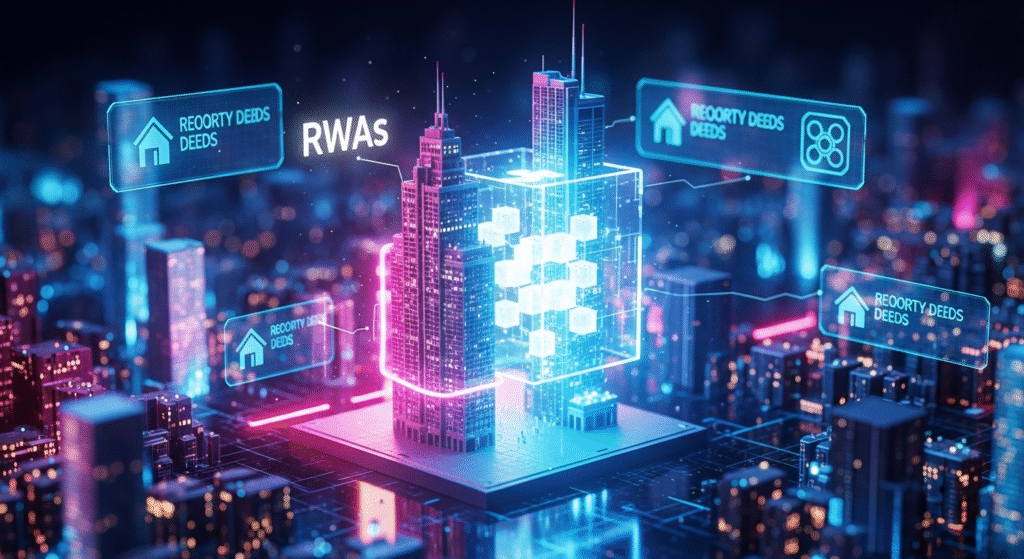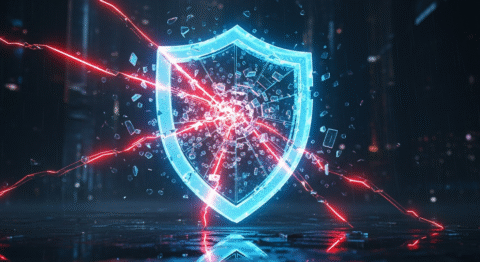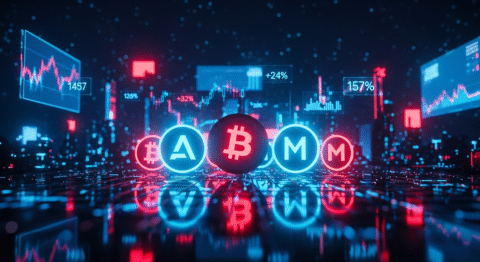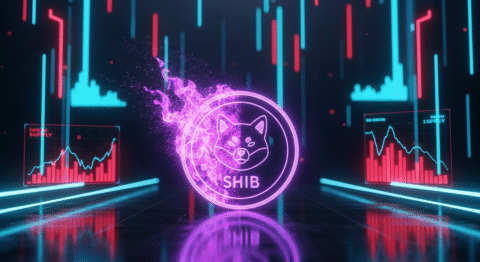RWA Crypto: Top 5 Altcoins to Watch Now
Are you missing out on the next wave of digital asset innovation while focusing solely on Bitcoin and Ethereum? With the cryptocurrency market constantly evolving, understanding emerging narratives is crucial for capturing significant growth. In this landscape, the tokenization of real-world assets (RWAs) is rapidly gaining traction, and RWA Crypto is at the forefront of this revolution. But which of these groundbreaking projects are poised to lead the pack?
The rise of RWAs in the crypto space isn’t just a fleeting trend; it’s a fundamental shift that promises to bridge the gap between traditional finance and decentralized ecosystems. It’s about bringing tangible value – from real estate and art to commodities and debt – onto the blockchain, unlocking liquidity and creating new investment opportunities. This article dives deep into the burgeoning RWA Crypto sector, identifying the top 5 altcoins that deserve your attention, analyze why these RWA tokens are gaining momentum, and equip you with the knowledge to navigate this exciting frontier.
For seasoned investors looking to diversify their portfolios beyond speculative meme coins, and for newcomers seeking a more grounded entry into the crypto world, understanding RWA Crypto is paramount. Let’s explore the data-backed insights that illuminate the path forward.
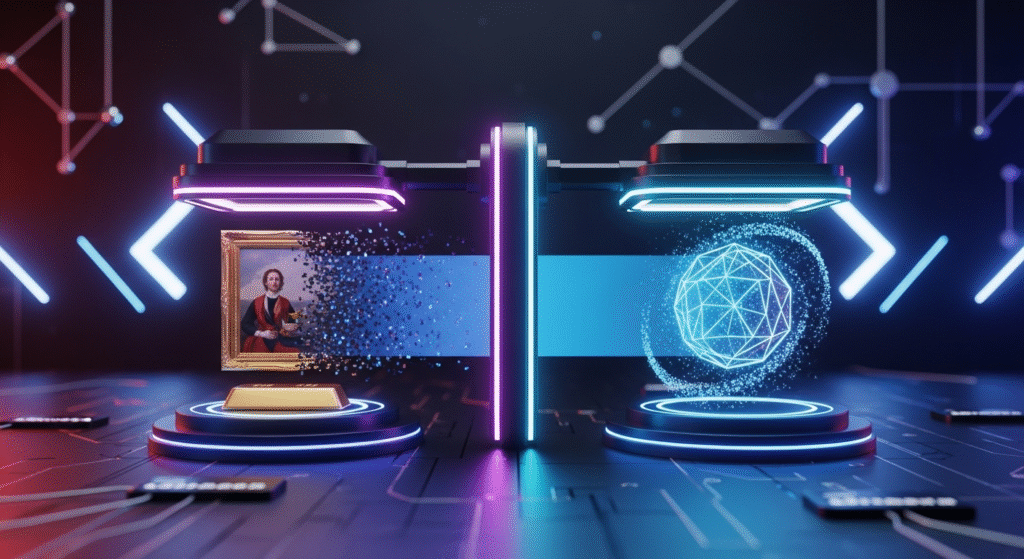
Crypto Market Overview
The cryptocurrency market has always been a dynamic beast, characterized by its rapid fluctuations and the emergence of new narratives. While Bitcoin continues to hold its position as the digital gold standard, and Ethereum solidifies its role as the programmable money layer, the altcoin market is where much of the innovation and potential for outsized returns often lies. We’ve recently seen a surge of interest in various altcoin categories, from utility tokens powering decentralized applications to governance tokens that facilitate community-led decision-making.
The meme coin phenomenon, while often driven by social media sentiment and sheer speculative frenzy, has also demonstrated the power of community and virality in the crypto space, though often with extreme volatility. Similarly, airdrops, the distribution of free tokens to existing holders of certain cryptocurrencies or participants in particular platforms, continue to be a popular method for new projects to gain users and bootstrap their ecosystems. These mechanisms, while sometimes controversial, highlight the inventive ways in which new projects are engaging with the market.
However, the current market sentiment also shows a growing institutional interest in more tangible, underlying value propositions. This is precisely where the concept of Real-World Assets (RWAs) tokenization comes into play. As regulatory clarity slowly emerges and technological limitations are addressed, the integration of traditional financial instruments with blockchain technology is no longer a distant dream but a burgeoning reality. This confluence creates a fertile ground for RWA Crypto projects to flourish, attracting both retail and institutional capital seeking stability and tangible underlying value. Understanding these broader market trends provides essential context for evaluating the potential of RWA Crypto altcoins.
The Core Concept: How RWA Crypto Actually Works
What Are RWA Crypto Tokens?
At its core, RWA Crypto refers to the process of tokenizing real-world assets. This means representing ownership or a claim on a physical or financial asset in the form of a digital token on a blockchain. These tokens can then be bought, sold, traded, and utilized within decentralized finance (DeFi) protocols. The fundamental idea is to leverage blockchain’s inherent properties – such as transparency, immutability, and fractional ownership – to unlock liquidity and create more efficient markets for traditionally illiquid assets.
Imagine owning a fraction of a Van Gogh painting. Instead of the immense capital and complex legalities involved in traditional art markets, a tokenized version on the blockchain could allow you to buy a small, verifiable percentage of that artwork. Similarly, a commercial real estate property, a portfolio of corporate bonds, or even carbon credits can be tokenized.
RWA tokens are the digital representations of these underlying assets. They act as digital deeds, certificates of ownership, or proof of claim, all secured and managed on a blockchain. This innovation can democratize access to high-value assets, allowing smaller investors to participate, and can provide traditional asset holders with a more liquid and accessible way to manage their wealth.
Key Components & Technologies
The magic behind RWA Crypto lies in the sophisticated interplay of several key technologies and concepts:
- Blockchain Technology: The foundation of any RWA Crypto project is a robust and scalable blockchain. This could range from established blockchains like Ethereum, with its vast DeFi ecosystem, to newer, more specialized chains designed for high throughput and low transaction costs, such as Polygon, Solana, or Avalanche. The blockchain ensures the secure, transparent, and immutable record of token ownership and transactions.
- Smart Contracts: These are self-executing contracts with the terms of the agreement directly written into code. For RWA Crypto, smart contracts enable automated processes like dividend distribution, interest payments, collateral management, and even the enforcement of asset-specific rules. They are crucial for managing the lifecycle of tokenized assets.
- Tokenization Platforms & Oracles: Specialized platforms facilitate the creation, management, and trading of tokenized assets. These platforms often integrate with regulated custodians and legal frameworks. Crucially, oracles are essential because they act as bridges, feeding real-world data (like asset valuations, interest rates, or ownership registries) from off-chain sources to the on-chain smart contracts. Without reliable oracles, the tokenized assets would lack a connection to their underlying value.
- Legal & Regulatory Frameworks: While not strictly a “technology,” the establishment of clear legal and regulatory frameworks is paramount for the widespread adoption of RWA Crypto. This includes ensuring compliance with securities laws, Know Your Customer (KYC) and Anti-Money Laundering (AML) regulations, and establishing clear ownership rights and dispute resolution mechanisms for tokenized assets. Projects that prioritize regulatory compliance and work with legal experts are more likely to achieve long-term success.
- Custody Solutions: For physical assets or assets requiring secure safekeeping (like gold or artworks), secure custody solutions are vital until the tokenization process is fully integrated and legally recognized. This often involves trusted third-party custodians who hold the physical asset, with their holdings verified by the RWA Crypto platform.
The Data-Driven Perspective
The burgeoning interest in RWA Crypto is not merely anecdotal; it’s backed by concrete data and observable market trends. As the crypto market matures, investors are increasingly seeking assets that offer utility, intrinsic value, and a potential hedge against broader market volatility.
Market Data & Trends
Data from various industry reports and analytics platforms paints a compelling picture:
- Growth Projections: Many financial institutions and research firms predict massive growth for the tokenized asset market. Estimates vary, but some project the total addressable market for tokenized RWAs to reach trillions of dollars within the next decade. This includes tokenized securities, real estate, commodities, and more.
- Institutional Adoption: Major financial players like BlackRock, Fidelity, and JPMorgan are actively exploring or involved in RWA tokenization initiatives. BlackRock’s iShares tokenized money market fund on the Ethereum blockchain is a prime example of institutional capital entering this space, signaling a strong validation of the underlying concept.
- DeFi Integration: Decentralized Finance (DeFi) protocols are increasingly incorporating tokenized RWAs as collateral for lending, borrowing, and yield generation. This integration creates new avenues for liquidity and utility for these assets. MakerDAO’s substantial holdings of RWA collateral, such as U.S. Treasury bills, highlight this trend.
- Specific Asset Classes: Real estate tokenization, for instance, has seen significant activity, allowing for fractional ownership and easier trading. The tokenization of credit and debt instruments is also gaining momentum, offering greater efficiency and transparency in traditional lending markets.
The increasing volume of RWA-backed stablecoins and the growing number of RWA collateralized loans across DeFi platforms are also key indicators of this trend’s strength.
Tokenomics & Market Health
When evaluating RWA Crypto projects, understanding their tokenomics is crucial for assessing their long-term viability and market health.
- Utility and Value Accrual: Do the project’s native tokens play a functional role within the ecosystem? This could include use as collateral, payment for services, governance rights, or staking rewards. Tokens that have clear utility and a demand driver tied to the success of the underlying assets are generally considered healthier.
- Supply and Demand Dynamics: Like any asset, the supply and demand for RWA tokens will influence their price. Projects with well-managed token supply, deflationary mechanisms (like token burns), or incentives for locking up tokens (staking) can create positive demand pressure.
- Revenue Generation & Fee Structures: How does the project generate revenue? Is it through transaction fees, asset management fees, or other services related to the tokenized assets? A sustainable revenue model is essential for the project’s long-term operation and value appreciation.
- Governance and Community: Projects that empower their community through decentralized governance mechanisms, allowing token holders to vote on proposals and protocol changes, often foster greater loyalty and long-term commitment. This community involvement can be a significant factor in a token’s market performance.
Analyzing these tokenomic factors allows for a more informed assessment of a project’s potential for growth and sustainability, separating promising RWA Crypto initiatives from those that may be less robust.
Risks, Challenges & Competition
While the potential of RWA Crypto is immense, it’s not without its hurdles. Understanding these challenges is key to making informed investment decisions.
Risks of RWA Crypto
- Regulatory Uncertainty: This is perhaps the biggest challenge. The legal status of tokenized assets, especially if they are deemed securities, can vary significantly by jurisdiction. Projects must navigate complex and evolving regulatory landscapes, which can lead to delays, increased compliance costs, and potential legal challenges.
- Asset Valuation and Volatility: While RWAs are often seen as more stable than pure speculative crypto assets, their underlying value can still fluctuate. Real estate can experience downturns, art markets can be subjective, and commodity prices are volatile. The token’s price must reflect these underlying asset movements, and any disconnect could be problematic.
- Counterparty Risk: If a project relies on third-party custodians for physical assets or uses traditional financial institutions, there’s an inherent counterparty risk. The failure or misconduct of these intermediaries can impact the value or accessibility of the tokenized asset.
- Smart Contract Vulnerabilities: As with any blockchain-based system, smart contracts are susceptible to bugs and exploits. A vulnerability in a smart contract could lead to the loss of assets or compromise the integrity of the tokenized ownership.
- Liquidity Concerns: While tokenization aims to improve liquidity, nascent markets for specific tokenized RWAs might still suffer from low trading volumes, making it difficult to buy or sell tokens at desired prices.
- On-Chain/Off-Chain Linkage: Maintaining a secure and verifiable link between the digital token and the physical or traditional asset it represents is a continuous technical and operational challenge, often relying on oracles and robust verification processes.
How Does RWA Crypto Stack Up Against Competitors?
When discussing competition for RWA Crypto, it’s important to consider both within the crypto space and against traditional financial systems.
| Feature | RWA Crypto (Tokenized Assets) | Traditional Assets (e.g., Stocks, Real Estate) | Purely Digital/Utility Tokens |
|---|---|---|---|
| Accessibility | High (fractional ownership, lower entry barriers) | Variable (can require significant capital, high transaction costs) | High (internet-accessible) |
| Liquidity | Potential for high liquidity, but depends on market development | Generally high for large markets, but illiquid for specific assets | Variable, depends on user adoption and trading volume |
| Transparency | High (public blockchain records, verifiable ownership) | Variable (reporting requirements, depends on market) | High (on-chain transactions if on a public blockchain) |
| Efficiency | High (automated settlements via smart contracts, 24/7 trading) | Lower (manual processes, intermediaries, business hours) | High (on-chain settlements) |
| Underlying Value | Tangible/financial assets (real estate, commodities, bonds) | Tangible/financial assets | Primarily utility, governance, or speculative value |
| Regulation | Emerging, complex, varies by asset and jurisdiction | Established, mature, but can be fragmented | Varies widely, often less defined but rapidly evolving |
| Innovation | Bridging traditional finance with blockchain for new markets | Incremental improvements | Creating entirely new digital economies and use cases |
| Risk Profile | Combination of asset risk and crypto risk; regulatory challenges | Primarily asset and market risk | High volatility, speculative risk, regulatory headwinds |
As the table shows, RWA Crypto aims to combine the inherent value and relative stability of traditional assets with the efficiency, accessibility, and transparency of blockchain technology. It presents a compelling proposition for those seeking a more grounded exposure to the digital asset revolution, offering an alternative to the often high-volatility, purely speculative crypto assets.
The Future Outlook
What’s Next for RWA Crypto?
The future trajectory of RWA Crypto looks incredibly promising, driven by several key developments and accelerating trends:
- Increased Institutional Adoption: As more blue-chip financial institutions engage with RWA tokenization, their involvement will likely pave the way for greater regulatory clarity and infrastructure development. This will attract more capital and mainstream acceptance. Expect to see a wider range of asset classes being tokenized, from infrastructure projects to intellectual property.
- Development of Sophisticated DeFi Integrations: RWAs will become increasingly integrated into DeFi lending, borrowing, and derivatives markets. This will unlock new forms of collateralization, create novel investment strategies, and potentially lower the cost of capital for businesses and individuals. Think of earning yield on tokenized U.S. Treasury bills or using fractional real estate as collateral.
- Technological Advancements: Innovations in blockchain scalability, interoperability, and oracle security will further enhance the efficiency and reliability of RWA Crypto platforms. Solutions enabling seamless cross-chain asset transfers and real-time data feeds will be crucial.
- Regulatory Maturation: While challenges remain, the ongoing dialogue between regulators and industry participants will lead to more defined frameworks. This clarity, though potentially restrictive in some ways, will ultimately foster greater trust and facilitate broader adoption. Projects that are proactive in their compliance efforts will likely emerge as leaders.
- Democratization of Investment: Perhaps the most significant long-term impact will be the further democratization of investment. RWA Crypto has the potential to make previously inaccessible or illiquid assets available to a global audience, fostering greater financial inclusion and creating more equitable investment opportunities.
The evolution of RWA tokens is set to redefine how we think about ownership, investment, and the very nature of financial markets.
Conclusion
The world of RWA Crypto is dynamic, innovative, and poised for significant expansion. By tokenizing real-world assets, we’re not just creating new digital collectible items; we’re unlocking liquidity, enhancing accessibility, and bridging the gap between traditional finance and the decentralized future. From real estate and art to bonds and commodities, the scope of tokenization is vast, offering exciting opportunities for investors seeking value beyond speculative digital assets.
We’ve explored how these RWA tokens function, the underlying technologies that power them, and the critical data trends supporting their growth. While risks such as regulatory uncertainty and smart contract vulnerabilities exist, the potential for increased institutional adoption, sophisticated DeFi integrations, and the democratization of investment opportunities makes RWA Crypto an undeniable force to watch.
As you navigate this evolving landscape, remember to conduct thorough research into each project’s tokenomics, security, and regulatory compliance. The future of finance is being built on the blockchain, and RWA Crypto is a cornerstone of that construction.
What are your thoughts on the future of RWA Crypto? Which tokenized assets are you most excited about? Share your insights in the comments below! For more in-depth analysis and updates on the latest in cryptocurrency, be sure to subscribe to our newsletter and explore our related articles on DeFi and blockchain innovation.
FAQs
What is the difference between altcoins and RWA tokens?
Altcoins is a broad term for any cryptocurrency other than Bitcoin. RWA tokens are a specific category of altcoins that represent tokenized real-world assets. So, while all RWA tokens are altcoins, not all altcoins are RWA tokens.
Are RWA tokens considered securities?
This is a key area of regulatory focus. In many cases, depending on how they are structured and what rights they confer, RWA tokens may be considered securities. This necessitates compliance with securities regulations, including KYC/AML procedures.
How can I invest in RWA Crypto projects?
Investment typically involves purchasing the native tokens of RWA platforms or acquiring tokens that directly represent underlying assets. This can be done through cryptocurrency exchanges that list these tokens or via specific RWA platforms. Always ensure the platform or exchange is reputable and offers the necessary security.
What are the main risks of investing in RWA tokens?
The primary risks include regulatory uncertainty, the potential for smart contract vulnerabilities, counterparty risk (if third parties are involved in asset custody), and the inherent market volatility of the underlying real-world asset itself.
How do RWA tokens unlock liquidity?
By dividing ownership into smaller, tradable digital tokens, RWA tokens make it easier and faster to buy and sell stakes in assets that were previously illiquid, such as real estate or fine art. This also democratizes access, allowing smaller investors to participate.


